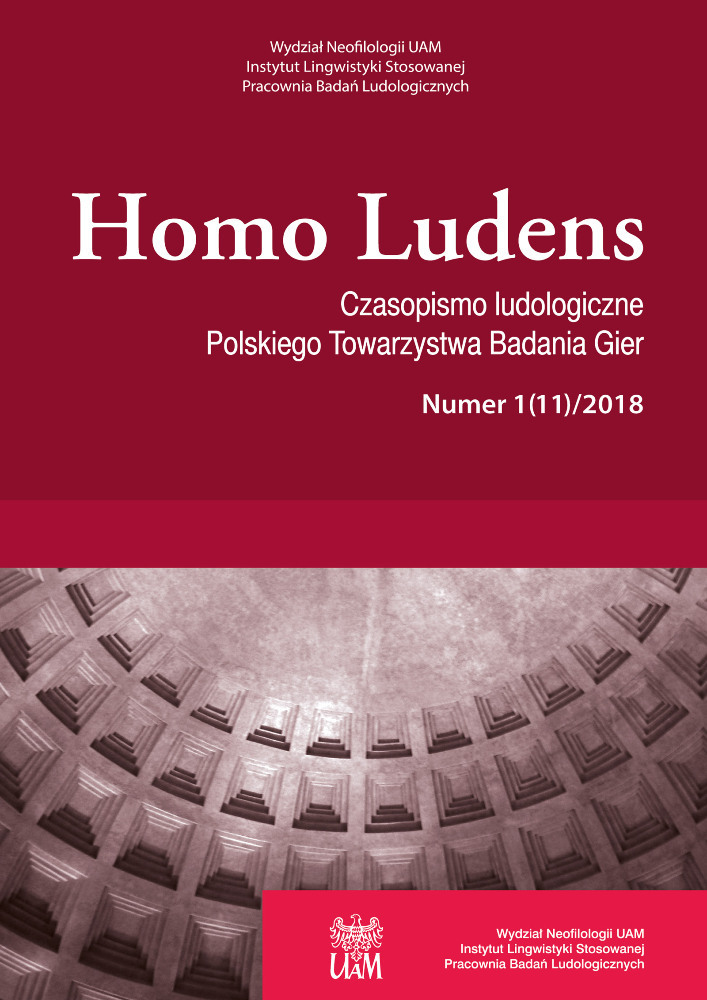Abstract
In this study we investigate the efficacy of frontal alpha asymmetry (FAA) to differentiate between successful and unsuccessful games. Participants (N = 27) came to the lab setting on two occasions, playing one commercially available game on each visit while being measured by electroencephalography (EEG). The results revealed that FAA can be successfully used to differentiate between games, even when the differences between them are too small to be captured by self-report methods. The differences in the elicited FAA in two games correlated with the differences in player behavior measured immediately after the game sessions. However, FAA was not related to the enjoyment reported by the players.
References
Berka, C., Izzetoglu, K., Bunce, S., Onaral, B., Pourrezaei, K., & Chance, B. (2004). Real-Time Analysis of EEG Indexes of Alertness, Cognition, and Memory Acquired With a Wireless EEG Headset. International Journal of Human-Computer Interaction, 17(2), 211–227.
Berka, C., Levendowski, D. J., Lumicao, M. N., Yau, A., Davis, G., Zivkovic, V. T., Craven, P. L. (2007). EEG correlates of task engagement and mental workload in vigilance, learning, and memory tasks. Aviation Space and Environmental Medicine, 78(5 II).
Berta, R., Bellotti, F., De Gloria, A., Pranantha, D., & Schatten, C. (2013). Electroencephalogram and physiological signal analysis for assessing flow in games. IEEE Transactions on Computational Intelligence and AI in Games, 5(2), 164–175.
Boyle, E. A., Connolly, T. M., Hainey, T., & Boyle, J. M. (2012). Engagement in digital entertainment games: A systematic review. Computers in Human Behavior, 28(3), 771–780.
Coan, J. A., & Allen, J. J. B. (2004). Frontal EEG asymmetry as a moderator and mediator of emotion. Biological Psychology, 67(1–2), 7–49.
Davidson, R. J. (1984). Affect, cognition, and hemispheric specialization. In C. E. Izard, J. Kagan, & R. B. Zajonc (Eds.), Emotion, Cognition, and Behavior (pp. 320–365). Cambridge University Press.
Davidson, R. J. (1993). Cerebral Asymmetry and Emotion: Conceptual and Methodological Conundrums. Cognition and Emotion, 7(1), 115–138.
Davidson, R. J. (2004). What does the prefrontal cortex “do” in affect: Perspectives on frontal EEG asymmetry research. Biological Psychology, 67(1-2), 219–233.
Doppelmayr, M., Klimesch, W., Pachinger, T., & Ripper, B. (1998). Individual differences in brain dynamics: important implications for the calculation of event-related band power. Biological Cybernetics, 79(1), 49–57.
Entertainment Software Assotiation. (2016). 2016 Essential Facts About the Computer and Video Game Industry. Retrieved from http://www.theesa.com/wp-content/uploads/2016/04/Essential-Facts-2016.pdf.
Harmon-Jones, E. (2004). On the relationship of frontal brain activity and anger: Examining the role of attitude toward anger. Cognition & Emotion, 18(3), 337–361.
He, E. J., Yuan, H., Yang, L., Sheikholeslami, C., & He, B. (2008). EEG spatio-spectral mapping during video game play. In 5th Int. Conference on Information Technology and Applications in Biomedicine, ITAB 2008 in conjunction with 2nd Int. Symposium and Summer School on Biomedical and Health Engineering, IS3BHE 2008 (pp. 346–348).
Heller, W. (1990). The neuropsychology of emotion: Developmental patterns and implications for psychopathology. In N. L. Stein, B. Leventhal, & T. Trabasso (Eds.), Psychological and biological approaches to emotion (pp. 167–211). Lawrence Erlbaum Associates.
Jasper, H. H. (1958). Report of the committee on methods of clinical examination in electroencephalography. Electroencephalography and Clinical Neurophysiology, 10(2), 370–375.
Jennett, C., Cox, A. L., Cairns, P., Dhoparee, S., Epps, A., Tijs, T., & Walton, A. (2008). Measuring and defining the experience of immersion in games. International Journal of Human Computer Studies, 66(9), 641–661.
Kivikangas, J. M., Chanel, G., Cowley, B., Ekman, I., Salminen, M., Järvelä,S., & Ravaja, N. (2011). A review of the use of psycho physiological methods in game research. Journal of Gaming & Virtual Worlds, 3(3), 181–199.
Klimesch, W. (1999). EEG alpha and theta oscillations reflect cognitive and memory performance: A review and analysis. Brain Research Reviews, 29(2–3), 169–195.
Klimesch, W., Schack, B., & Sauseng, P. (2005). The functional significance of theta and upper alpha oscillations. Experimental Psychology, 52(2), 99–108.
Nacke, L. E., Stellmach, S., & Lindley, C. A. (2010). Electroencephalographic assessment of player experience: A pilot study in affective ludology. Simulation & Gaming, 42(5), 632–655.
Nordin, A. I., Denisova, A., & Cairns, P. (2014). Too Many Questionnaires: Measuring Player Experience Whilst Playing Digital Games. In Seventh York Doctoral Symposium on Computer Science & Electronics (pp. 69–75).
Ohme, R., Reykowska, D., Wiener, D., & Choromanska, A. (2010). Application of frontal EEG asymmetry to advertising research. Journal of Economic Psychology, 31(5), 785–793.
Pizzagalli, D. A. (2007). Electroencephalography and High-Density Electrophysiological Source Localization. In: J. T. Cacioppo, L. G. Tassinary, & G. G. Berntson (Eds.), Handbook of Psychophysiology (Third Edit, pp. 56–84). Cambridge University Press.
Poels, K., de Kort, Y. A. W., & IJsselsteijn, W. A. (2008). Identification and Validation of Post-Game Experiences. In CHI Conference.
Ryan, R. M., Rigby, C. S., & Przybylski, A. (2006). The motivational pull of video games: A self-determination theory approach. Motivation and Emotion, 30(4), 347–363.
Sanders, T., & Cairns, P. (2010). Time perception, immersion and music in videogames. In Proceedings of the 24th BCS Interaction Specialist Group Conference (pp. 160–167).
Spielberg, J. M., Stewart, J. L., Levin, R. L., Miller, G. A., & Heller, W. (2008). Prefrontal Cortex, Emotion, and Approach/Withdrawal Motivation. Social and Personality Psychology Compass, 2(1), 135–153.
Stewart, J. L., Coan, J. A., Towers, D. N., & Allen, J. J. B. (2011). Frontal EEG asymmetry during emotional challenge differentiates individuals with and without lifetime major depressive disorder. Journal of Affective Disorders, 129(1-3), 167–174.
Strojny, P., & Strojny, A. (2014). Kwestionariusz immersji – polska adaptacja i empiryczna weryfikacja narzędzia / The Immersion Questionnaire – Polish adaptation. Homo Ludens, 1(6), 171–185.
Sutton, S. K., & Davidson, R. J. (1997). Prefrontal brain asymmetry: A biological substrate of the behavioral approach and inhibition systems. Psychological Science, 8(3), 204–210.

